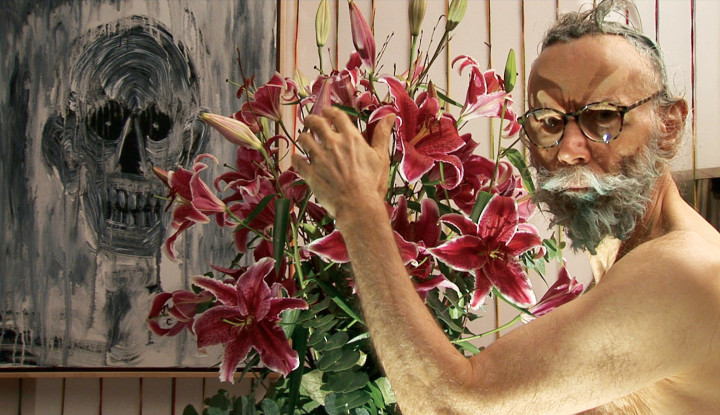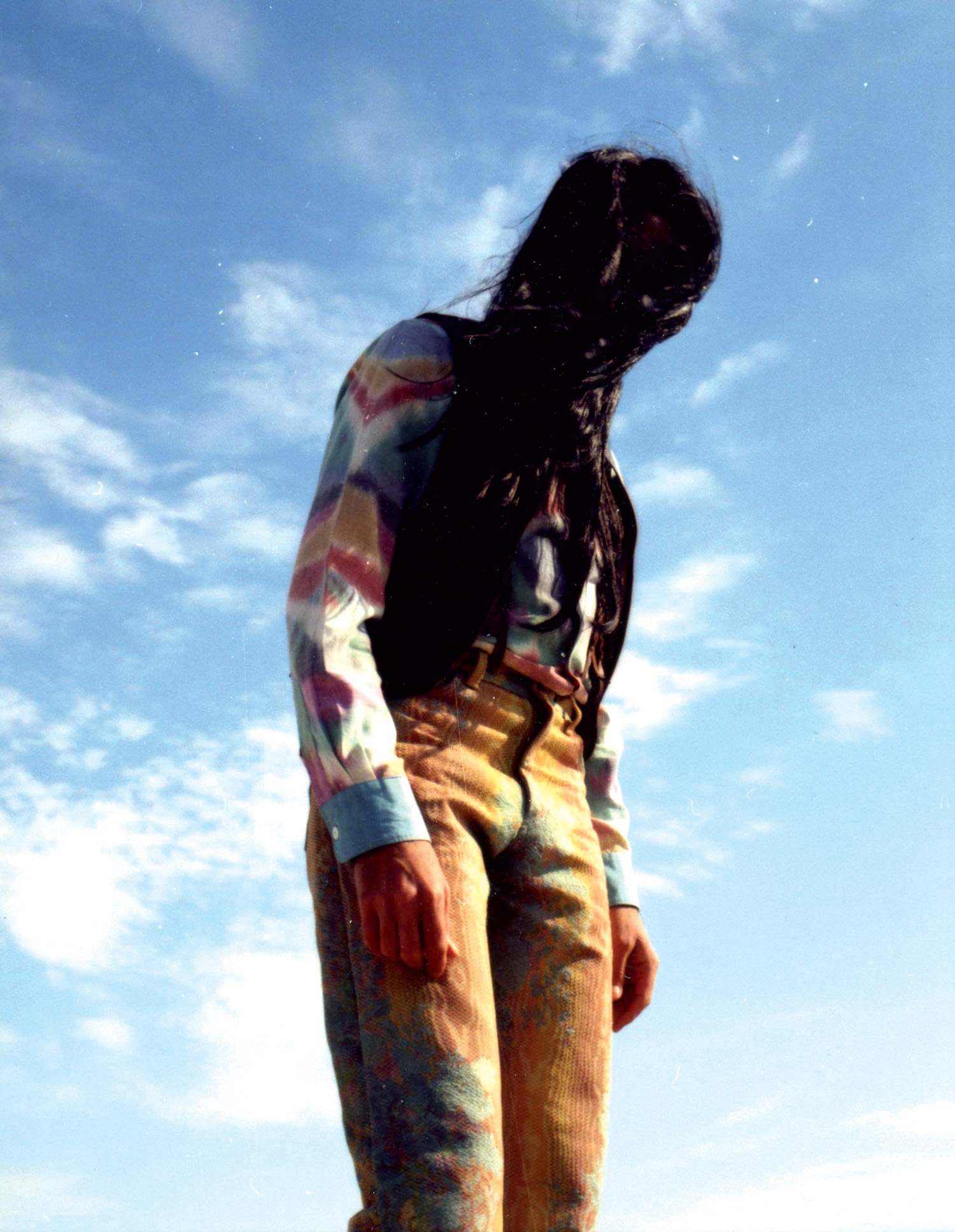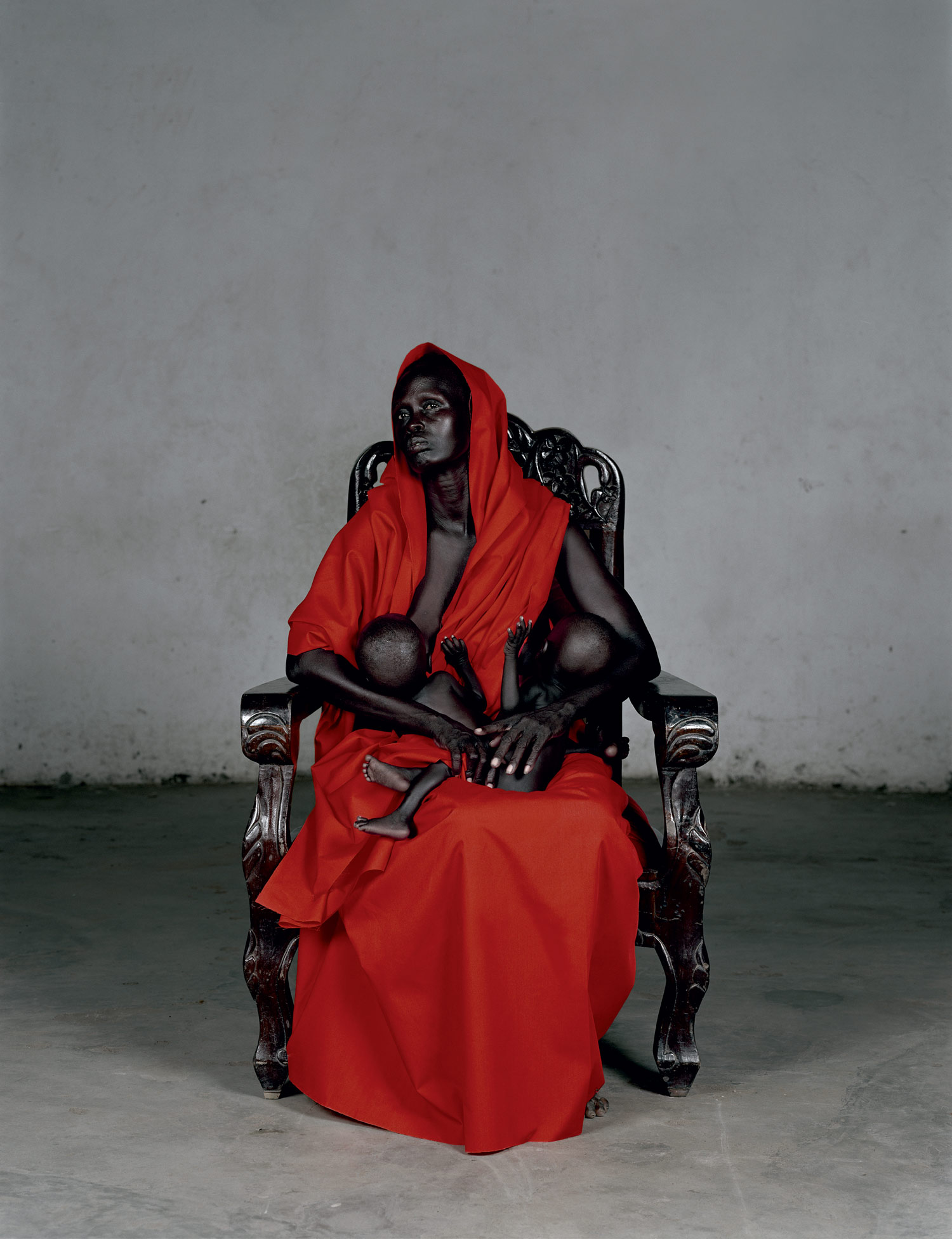
With his “Photo-Transformations” series significantly predating Cindy Sherman’s exhaustive mediations on the subject, Lucas Samaras pioneered the dual investigation of narcissism and self-portrait photography in the early ’70s. Smearing, manipulating and distorting the wet Polaroid photo emulsion to terrifying effect, he employed a radical technological innovation to create a panoply of psychedelic, psychological versions of the metamorphosed self. Now, nearly half a century later, despite blue chip gallery representation, despite a dazzling oeuvre that encompasses drawing, painting, photography, film, video, sculpture, fabric, jewelry, assemblage and installation, “Photo-Transformations” perhaps remains the artist’s most recognizable body of work. Samaras is emblematic of the cult artist, and these days resembles a gaunt, Goth Santa Claus with his snowy white beard, shiny leather coat and wide brimmed hat. Almost famous. The outsider. And he plays the role very well.
Technology has, at last, caught up with this art world conjurer’s bag of tricks in the form of the Apple movie-making program called iMovie. Now, instead of drawing directly on the photographic image, Samaras uses a Wacom tablet and stylus. The plasma screen is a keen substitute for a sorcerer’s crystal ball, and iMovie distortion filters — such as fairy dust, fog, ghost trails, mirror image and sepia — are his incantations to invest in the erotic energy of the ego. The exhibition features a two-part installation which consists of an iMovie short, a slow-motion strip tease self-portrait entitled Ecdysiast, shown synchronically with 24 screens playing 24 films of individuals — among them his peers Jasper Johns, Chuck Close, Claes Oldenburg, and various representatives of the art world intelligentsia — who have been recorded as they watched, and thus participated in, Ecdysiast. (The word is derived from the Greek ‘ekdusis,’ to molt.)
What comes immediately to mind is the French phrase mis-en-abîme which translates as placing into the abyss‚ and alludes to the endless reflection of a mirror in a mirror. Velásquez also used this conceit to great effect in his famous Las Meninas. With the audacity of including himself in the commission, Velásquez is seen standing on the left-hand side of the painting, brush in hand, before a large canvas. The dazzlingly attired Infanta Doña Margarita and members of the Spanish court are arranged informally in the foreground. This is, perhaps, the first ‘snapshot’ taken hundreds of years before the invention of photography. We, the painting’s audience, stand just to the right of the King and Queen, whose reflections can be seen in a distant mirror hanging above the Infanta, looking down on an austere room in the Alcázar, hung with del Mazo’s copies of Rubens. Just as Velásquez has done, Samaras has used a little magic to make an indelible record of his place in the art world, by implicating his audience and his cronies with the evidence of his greatness.





